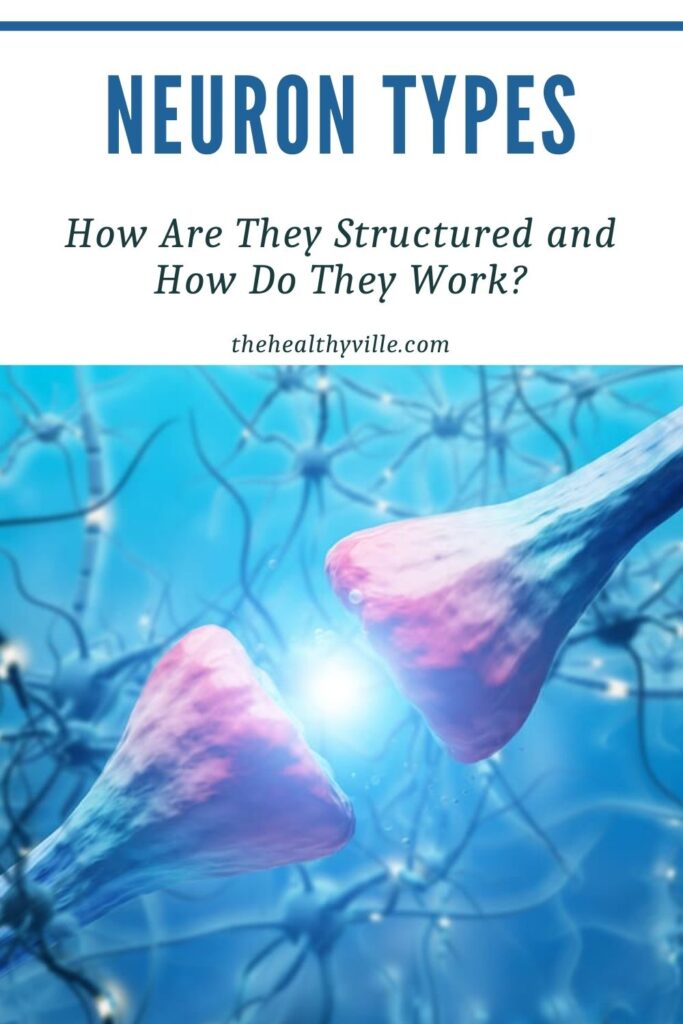Neuron types are not that many, and they all have a similar structure, even though they are performing different functions. Find out more!
The functioning of neurons makes them a kind of messenger, which establish large communication networks that are what allow the body to function properly. Are you interested in knowing more about it? Here we detail it.
By observing how neurons work, it is discovered that these cells are a sophisticated work of engineering of nature. Neurons are the basic unit of the nervous system and allow the body to control and coordinate all its activity.
The way neurons work makes it possible for information to be transmitted, both external to the body and internal, through a complex mechanism of chemical and electrical signals. Impulses, through certain nerve fibers, can be transmitted at an incredible speed of 360 kilometers per hour.
Thanks to the way neurons work, we can withdraw our hand when we touch a very hot surface, feel if something is soft, experience pain, know if something is cold, and so on. They are like the agents that deliver messages within our nervous system.
What are neurons?
Neurons are a type of cell that is part of the nervous system. In fact, their basic function is to receive and transmit information, through electrical impulses. Neurons make up extensive communication networks throughout the nervous system.
In fact, these cells are shaped like a star. They have a central body, which contains all the structure that keeps them alive. It also has several branches, within which there are many that are short and plume-like; are the dendrites. They also have a very long branch, called an axon.
Before it was believed that the body was not capable of producing new neurons in the brain, throughout life. However, a team of scientists from the Karolinska Medical Institute (Sweden) conducted an experiment and determined that this was not the case. The brain can produce up to 1,400 neurons a day, thanks to the process known as “neurogenesis”.
The structure of neurons
As we have already seen, neurons are made up of three elements. Let’s see each of them:
- The body or soma. It contains all the elements that the neuron needs to stay alive.
- The dendrites. They are extensions that receive nerve impulses sent by other neurons, through a process called synapses.
- The axon or neurite. It is a long, thin extension whose role is to transmit nerve impulses to other cells.
Neuron types
All neurons basically have this structure, but sometimes they have some differences from each other, due to the functions they perform. Thus, we have three types of neurons:
- Monopolar. They have a single extension, which acts in two ways. This extension acts both as a dendrite and as an axon. They are typical of sensory neurons.
- Bipolar. They have two extensions; one of them acts as a dendrite and the other as an axon. They are typical of the neurons that are in some parts of the eyes, ears and smell.
- Multipolar. They are the most numerous type of neurons and present the classic structure of many plume-shaped dendrites in the reception area and a long axon in the exit area. They are in the spinal cord and in the brain.
How do they work?
Expressed in a very simple way, the neuron receives an electrical impulse through the dendrites. This passes through the body or soma and then is giesto other cells through the axon.
The axon releases a chemical called a neurotransmitter, which reaches the dendrites of the following neuron and puts in motion the electrical signal that starts a new cycle like the previous one. Each neuron can actually connect with thousands of others.
There are several types of neurotransmitters that facilitate the different functions of neurons. These include:
- Serotonergic: secrete serotonin (mood).
- Dopaminergic: they secrete dopamine (pleasure).
- GABAergic: secrete GABA (inhibitory neurotransmitter).
- Glutamatergic: they secrete glutamate (memory and recall).
- Cholinergic: secrete acetylcholine (multifaceted).
- Noradrenergic: secrete norepinephrine / norepinephrine (increased heart rate and blood pressure).
- Vasopressinergic: they secrete vasopressin (homeostatic regulator).
- Oxytocininergic: secrete oxytocin (affects).
Other information about the functioning of neurons
As you can see, neurons are small messengers in the body, since their main function is to receive and transmit information. Both the other neurons and the muscles and glands receive that information.
In fact, all neuron types mainly fulfill three functions: sensory, integrative and motor. The sensory allows us to perceive internal and external changes, such as heat, light, and so on. The integrator combines the information received to give an appropriate response, for example, cover you if it is cold.
Motor function causes the muscles and glands to act, or not, according to need. There are neurons in our central nervous system (brain and spinal cord), but these cells are also in the peripheral nervous system, whose central nucleus is the ganglion, within the digestive system.
Don’t forget to SHARE the info about the neuron types with your friends and family on your social networks!

